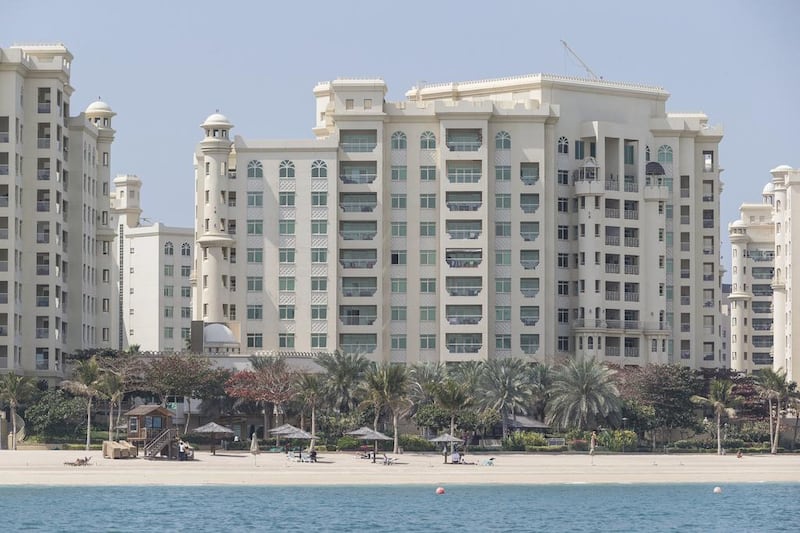Brokers and analysts are certain that Dubai residential house prices will rise next year but disagree over the speed of the property market’s recovery.
Two reports yesterday by JLL and dubizzle and by Core Savills are forecasting that Dubai’s property market will recover much faster than the end of next year, which their rival Cluttons had set as a target on Sunday.
All three brokers expect house prices and rents to rise at various points next year as the emirate’s economy recovers and construction jobs are created to build Expo 2020 infrastructure.
According to the report by property broker JLL and website dubizzle, average asking rents and sales prices in the city are 4 per cent lower than they were a year ago. However, during the third quarter they remained largely unchanged.
“While it is always hard to recognise the precise bottom of a cycle until after the market recovers again, we feel there is limited further downside potential in rentals from this point,” said Craig Plumb, the head of research at JLL, and Ann Boothello, the senior product marketing manager at dubizzle, the report’s authors.
“Trends in sales prices also provide a similar picture of the market poised close to the bottom of its current cycle with no movement in Q3 2016,” they said.
According to JLL and dubizzle, property sales prices in Dubai have fallen by 15 per cent over the past two years and rents are down by about 10 per cent.
Rival property broker Core Savills said that it had already seen an increase in sales prices in some of Dubai’s lower to midmarket submarkets.
It said that average sales prices in areas such as Dubai Silicon Oasis, Dubai Sports City, International City and Discovery Gardens had risen between 3 and 5 per cent from their lowest levels at the start of 2016.
However, prices in prime areas such as Downtown Dubai, Dubai Marina and Palm Jumeirah continue to witness marginal sales price contractions in the range of between 1 and 2 per cent quarter-on-quarter.
“The prime segment indicates further room for price softening before marking an expected uptick in 2017,” said Prathyusha Gurrapu, senior manager for research at Core Savills. “This has led some of the players to announce that the market is still at the bottom, while a nuanced analysis of the situation displays a wider spread in the real estate cycle.”
The news comes as brokers continue to report a slump in both sales and rentals at the top end of the Dubai market as senior executive jobs are retrenched and companies cut back on lavish housing allowances.
On Sunday, Cluttons reported that prices for Burj Khalifa apartments had fallen 15 per cent year-on-year and prices at The Palm Jumeirah fell by 12 per cent, in stark contrast to flattening prices in mid-market areas.
According to Core Savills, transactions for homes in the city priced at less than Dh1 million made up nearly half of all transactions in the city so far this year. It found that so called “affordable housing” accounted for 46 per cent of sales transactions – up from 38 per cent a year earlier.
Property portal Propertyfinder said that more than half of its online property searches for rental homes were for homes advertised at Dh100,000 per year or less, yet properties within this range account for only a quarter of listings.
lbarnard@thenational.ae
Follow The National's Business section on Twitter






